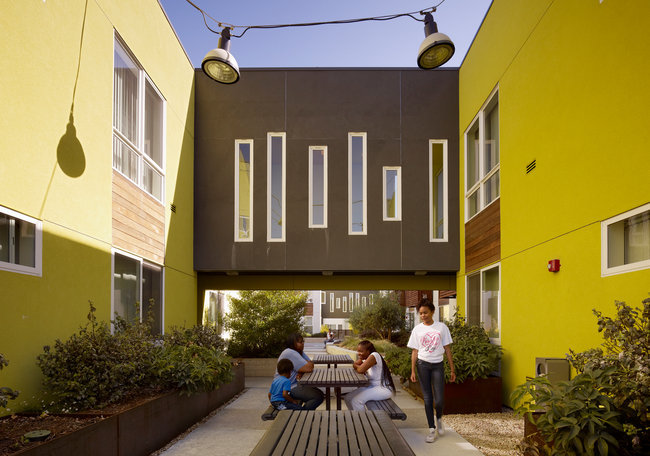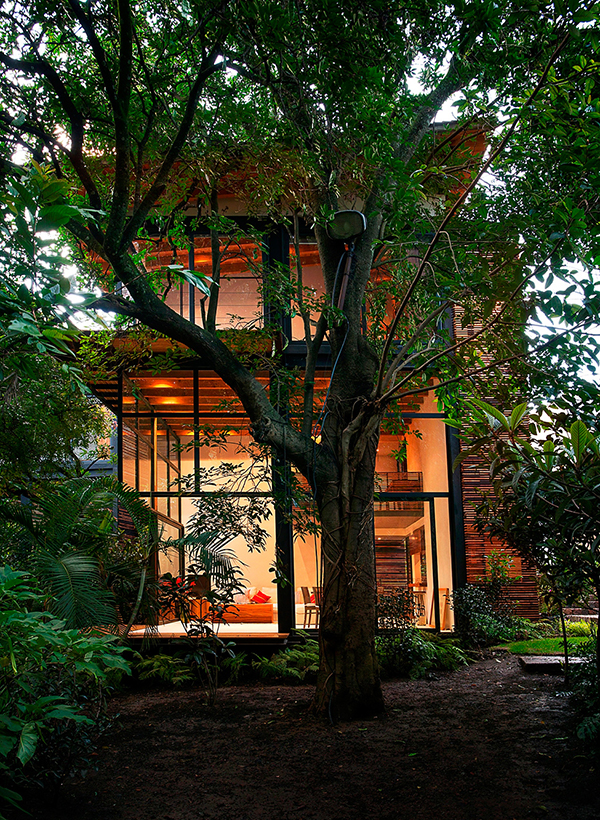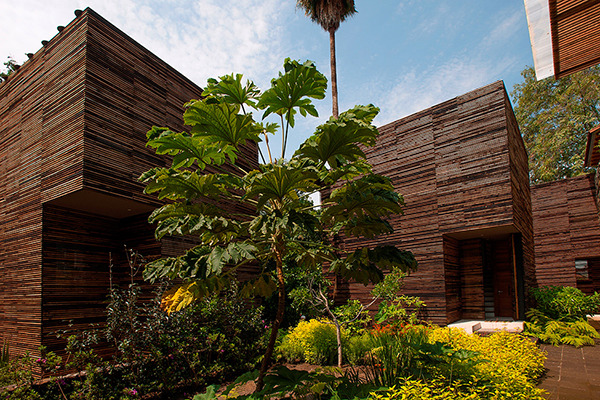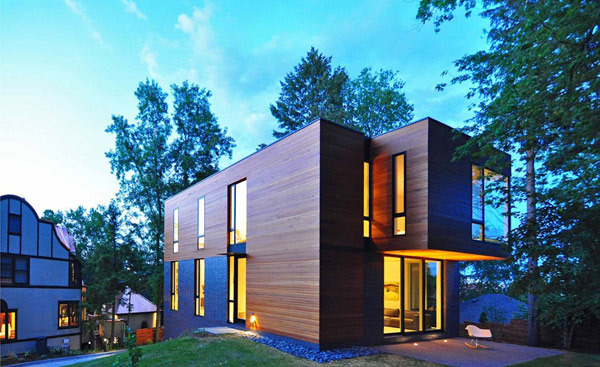Bermuda has lost the opportunity, several times now, to design communities and, instead, has erected a crowd of dwelling units, between them providing or intending to provide a roof over the head of more than one hundred families. Examples that come to mind include Harbour View Village, Grand Atlantic - unfortunately, it's simply very visible; there's no intention to pick on it! - and Loughlands.
It's the lost potential that is probably most frustrating. No doubt current residents enjoy living in a new development but architects and planners, me included, should take some responsibility in settling for OK, or even pretty good, when great might have been within reach.
 tassafaronga village, east oakland, ca image: matthew millman for nytimesDesigning for a community can be done. This article in the New York Times, Design as a Balm for a Community's Soul by Michael Kimmelman wonderfully explains and illustrates the possibilities, admittedly in an urban setting. (Enjoy the accompanying slide presentation too.)
tassafaronga village, east oakland, ca image: matthew millman for nytimesDesigning for a community can be done. This article in the New York Times, Design as a Balm for a Community's Soul by Michael Kimmelman wonderfully explains and illustrates the possibilities, admittedly in an urban setting. (Enjoy the accompanying slide presentation too.)
Useful points include: design so that eyes are on the shared public spaces; make those spaces ones that encourage walking, recreation and community; include business ventures that appeal to immediate residents as well as passers-by so as to bring activity to the site; and, open the development up to its surrounding neighbourhood.
We tend, here, in both the private and public sectors, to engage in some 'tick the box' design and planning. So, for example, the Cataract Hill/Fritholme Gardens residential complex, which includes a swimming pool and an attached clubhouse with a bar, hairdresser, yoga centre and gym, enables both architect and planner to tick the communal amenity space box and pat ourselves on the back.
As it turns out, this residential amenity space deliberately does incorporate uses that are a part of daily living and which appeal to both immediate residents and the wider island community. In that way it steps up the community building ladder, more so than most, and that's a good thing. Also, with 100% occupancy and more townhouses and villas on the way, clearly there is something working in this formula. Are there tweaks, though, that might help it fulfill its community potential and take it to the level of great?
Given the economy and current lack of construction, it is unlikely issues of community building will move to the front burner soon. That doesn't mean Bermuda's architects and planners can't spend some time considering new ideas and ways to improve the communities, neighbourhoods and apartment complexes we have now. The collection of buildings and activities somewhat randomly sprouting up around the Warwick Gas Station on South Road and the proposed residential community planned for Victoria Terrace in Dockyard point to the opportunity for new thinking around community design that ought not be lost. Such new thinking can only be good for Bermuda.
Update on 2012-10-21 21:57 by A Ratteray Pryse
This article on the polis blog, "Social Sustainability Report Must Look Deeper" by Melissa Garcia Lamarca is enlightening. UK developer, the Berkeley Group, studied the social sustainability of four of its housing developments, as a result of England's 2011 riots, using the following definition:
Social sustainability is about people's quality of life, now and in the future. It describes the extent to which a neighbourhood supports individual and collective well-being.
Social sustainability combines design of the physical environment with a focus on how the people who live in and use a space relate to each other and function as a community. It is enhanced by a development that provides the right infrastructure to support a strong social and cultural life, opportunities for people to get involved, and scope for the place and community to evolve.
The four dimensions studied included: infrastructure and social amenities, voice and influence, social and cultural life and change in the neighborhood. Critically, as Lamarca points out, the dimension of equity and justice was not studied. Considering that riots served as a catalyst for the study, this is surprising.
Bermuda's communites - the examples highlighted above - are considerably smaller than those constructed by the Berkeley Group but there is much for us to learn from this hindsight view.
 image: alejandro sanchez garcia arquitectos
image: alejandro sanchez garcia arquitectos image: alejandro sanchez garcia arquitectos
image: alejandro sanchez garcia arquitectos


